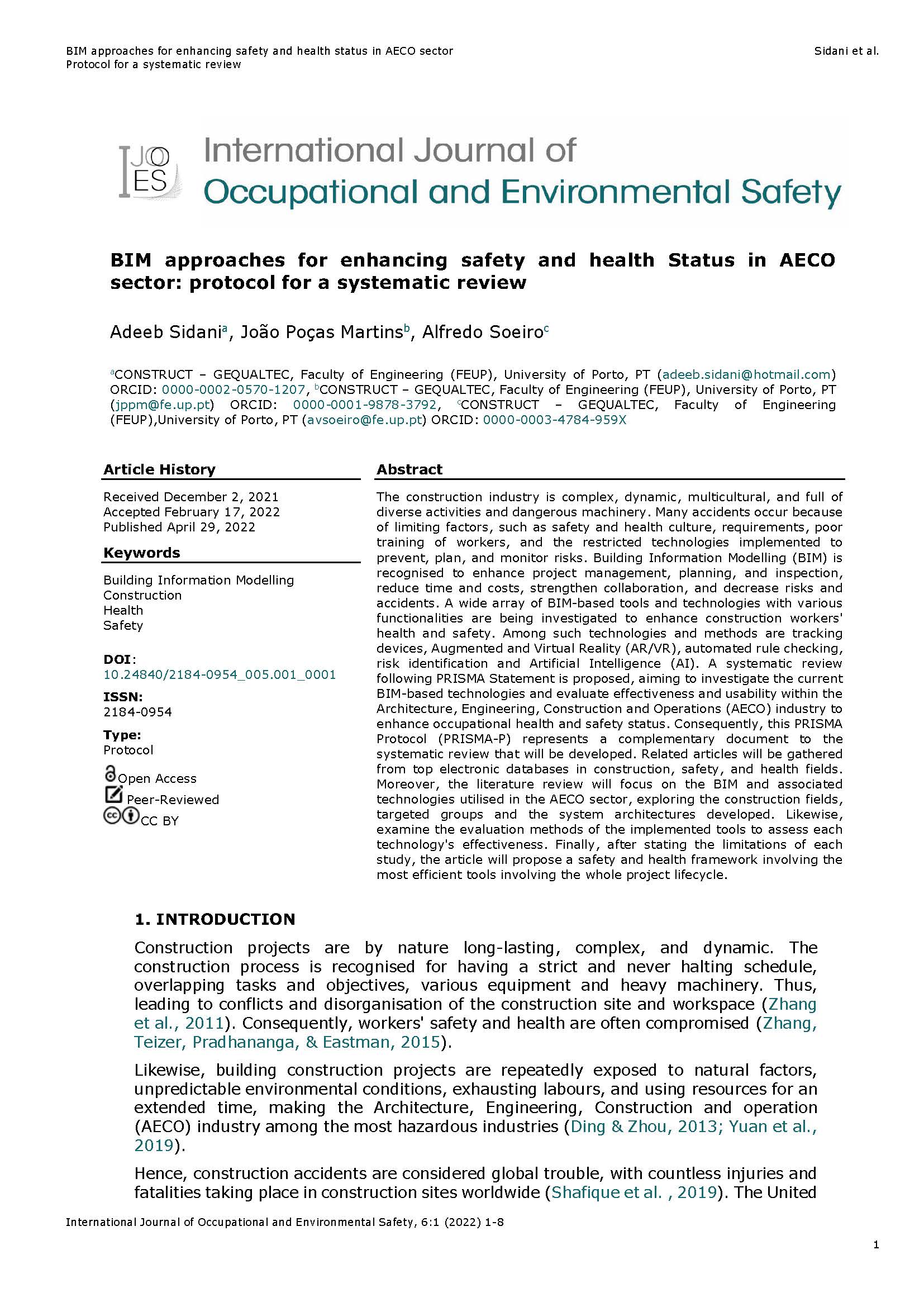BIM approaches for enhanced health and safety status in construction - protocol for a systematic review Protocol
Main Article Content
Abstract
The construction industry is complex, dynamic, multicultural, and full of diverse activities and dangerous machinery. Many accidents occur because of limiting factors, such as safety and health culture, requirements, poor training of workers, and the restricted technologies implemented to prevent, plan, and monitor risks. Building Information Modelling (BIM) is recognised to enhance project management, planning, and inspection, reduce time and costs, strengthen collaboration, and decrease risks and accidents. A wide array of BIM-based tools and technologies with various functionalities are being investigated to enhance construction workers' health and safety. Among such technologies and methods are tracking devices, Augmented and Virtual Reality (AR/VR), automated rule checking, risk identification and Artificial Intelligence (AI). A systematic review following PRISMA Statement is proposed, aiming to investigate the current BIM-based technologies and evaluate effectiveness and usability within the Architecture, Engineering, Construction and Operations (AECO) industry to enhance occupational health and safety status. Consequently, this PRISMA Protocol (PRISMA-P) represents a complementary document to the systematic review that will be developed. Related articles will be gathered from top electronic databases in construction, safety, and health fields. Moreover, the literature review will focus on the BIM and associated technologies utilised in the AECO sector, exploring the construction fields, targeted groups and the system architectures developed. Likewise, examine the evaluation methods of the implemented tools to assess each technology's effectiveness. Finally, after stating the limitations of each study, the article will propose a safety and health framework involving the most efficient tools involving the whole project lifecycle.
Article Details

This work is licensed under a Creative Commons Attribution 4.0 International License.

